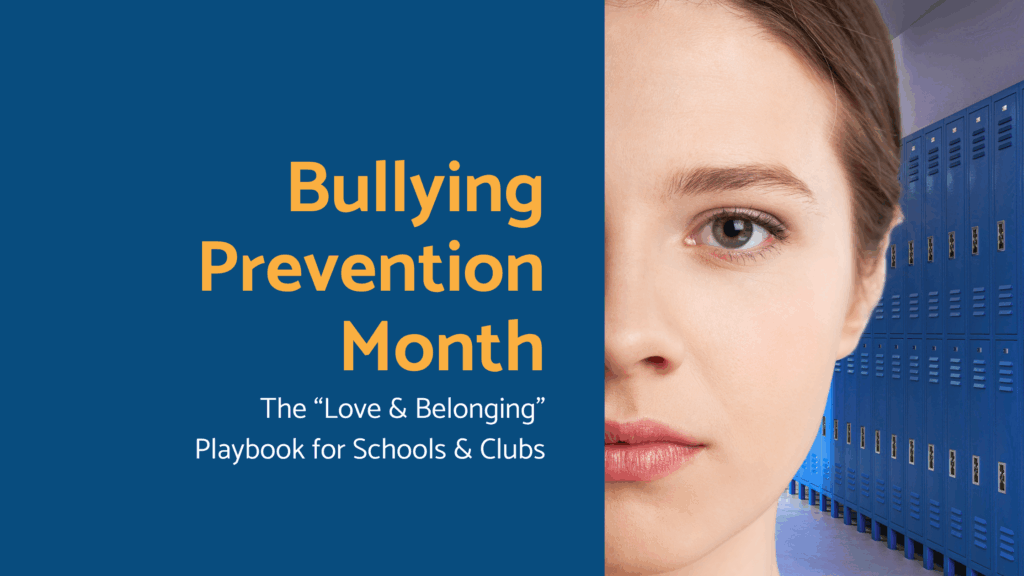

Why a “Love & Belonging” Lens Reduces Bullying
Bullying thrives where students feel disconnected and unseen. A belonging lens flips the script: strengthen relationships and student agency, and conduct begins to follow culture. Instead of leading with rules alone, you’ll design connection into the week—through check-ins, peer leadership, and safe reporting—so students experience dignity and accountability at the same time. On campus, that looks like:
Clubs that normalize inclusive leadership and upstander skills.
Short, reliable belonging pulses that guide small improvements every month.
A report-to-repair flow that responds quickly and restores community when safe to do so.
Family pathways that clarify “who to tell, how to tell them, and what happens next.”
Belonging is the prevention layer; consequences still exist, but they don’t carry the whole load.
The Love & Belonging Playbook (10 Steps for Schools & Clubs)
Rules-First vs. Belonging-First: What Changes?
Measure, Report, Repair: Make It Stick
Bring Families and Community In
Connect to iLevelUP: Guidance That Extends the Work
Localize the Playbook
Keep Momentum Beyond October

Bullying Prevention Month FAQs
Unity Day is typically the third or fourth Wednesday in October; many US districts are observing Oct 22, 2025, while some note Oct 15—confirm with your district. Wear orange.
It’s the first Monday of October; in 2025 that’s Oct 6 (wear blue).
Research associates higher school belonging with lower bullying involvement and better mental health outcomes.
Use ED’s EDSCLS or a simple 4‑item pulse (e.g., “People at my school care about me”), then iterate monthly.
Bullying is repeated, intentional harm with a power imbalance. StopBullying.gov provides clear definitions and roles.
Adopt a report‑repair flow: quick reporting, timely adult follow‑up, and restorative conferencing when safe. Use federal guidance to underpin policies.
PACER’s month‑long student kits and Unity Day guides are free and K‑12 friendly.
CDC reports about 1 in 5 high schoolers experienced on‑campus bullying in the past year, and more than 1 in 6 experienced cyberbullying.






